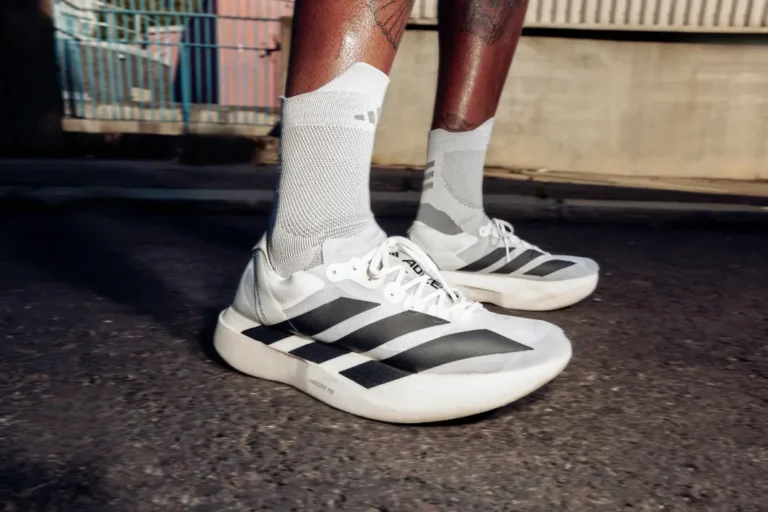She’s a shoe-in.
When When Mary Lynch, 25, runs her third New York City Marathon on Sunday, she’s hoping her $250 Hoka Rocket X2 super shoes will help propel to her first sub-3-hour finish.
“I have never run a marathon in them,” Lynch, who works in finance and lives in Manhattan, told The Post. “You see the pros wearing them. It’s a very seductive [promise].”
Super shoes were first introduced by Nike in 2016 as an unnamed prototype for elite runners and later christened the Vaporfly 4%. Now, the high tech sneakers — which have a carbon fiber plate embedded in a lightweight foam midsole, helping to propel a runner forward with less effort — have trickled down to everyday athletes.
“I don’t know a single runner who isn’t interested in this sneaker,” running coach Zandy Mangold told The Post. “The shoes improve your running economy which basically means, they allow you to run the same pace at an easier effort.”
Nearly every major manufacturer now offers their spin on the trend — for a price.
A Nike Vaporfly costs $260, the Hoka Rocket X2 is $250 and, this past September, Adidas released the Adizero Adios Pro Evo1, which cool $500.
The 521 pairs initially made available sold out “in a matter of minutes,” according to CNN.
Studies have found that runners can see a one to three percent increase in speed wearing the shoes — and the faster the pace, the bigger gains. Ethiopia’s Tigst Assefa ran September’s Berlin Marathon in Adizeros and smashed the women’s world record by more than two minutes with a time of 2 hours 11 minutes and 53 seconds.
At the Chicago Marathon in October, Kelvin Kiptum of Kenya set a men’s world record of 2 hours and 35 seconds while wearing a prototype of the Nike Alphafly 3 sneakers.
Britt Gunsser, a physical therapist at Fusion PT in Westchester, is looking to finish in 4 hours and 10 minutes on Sunday, a potential personal best.
She’s on the slower side of who the shoes claim to benefit, but she’s found that her $230 New Balance Super Comp Elite have helped her not to tire as easily when she’s worn them for speed training.
“I’m not relying on them. I am expecting to improve my time because of my speed workouts, not my sneakers,” she sad. “But they are a bonus.”
But the hyped shoes aren’t without controversy. They’ve been called “technological doping” and, in 2021, World Athletics, an international governing body for running and track and field events, ruled that they must adhere to certain physical specifications, such as the sole being no thicker than 40mm.
And, medical professionals say they’re not a good option for everyone.
Mandy Fox, a physical therapist at Finish Line PT in Chelsea, advises people with excess motion through their foot and ankle to build up a baseline of calf muscles and strengthen tendons before wearing them, lest they lead to tendon pain or plantar fasciitis.
“Because of the stacked height and plate, they are less stable shoes,” she explained.
But, Stephanie Junger-Moat can’t imagine the marathon without them. Sunday will be her ninth marathon and her third wearing Nike Vaporflys.
“It’s hard to turn back [to regular shoes]. They are just so light that it feels like you’re not running in anything. Over the course of race, they don’t weigh you down,” said Junger-Moat, 42 who is hoping to break four hours.


